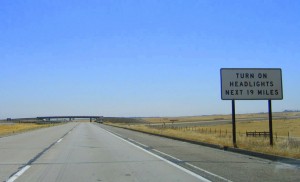
After two unsuccessful attempts to pass a transportation sales tax in Stanislaus County, area political leaders are preparing for a third try. Each successive attempt has come closer to passage. This time, the tax may pass.
The original 2006 proposal consisted of a laundry list of projects. Each city and the county government submitted a list of “needs” and the list was presented to voters. The proposal did not pass.
The 2008 proposal of was better researched. It featured a new list of priorities. After a brief public survey to confirm that the priorities were sound, the public voted. The proposal lost by such a small margin that proponents asked for a recount.
The present proposal features even more extensive research. It is being carefully crafted to eliminate unpopular projects and then submitted to various groups for their support. A consultant was hired to figure out what people will vote for, not necessarily what is good public policy. Politically, this is the way to gain passage.
Roads have deteriorated within Stanislaus County to the point that any proposal to do more maintenance will gain the support of a wide majority of voters. In 2008, proponents ignored a suggestion to increase the percentage of tax revenue to be used for repair and reduce the allocation for projects that increase roadway capacity. Will the present proposal increase the maintenance component sufficiently to assure passage?
A massive new El Nino has forecasters predicting heavy rain. The rains additional damage to existing infrastructure and increase road maintenance needs to the point where the entire half cent sales tax could be used for repairs alone.
A Barrier to Passage
Local officials are biased in favor of subsidies to developers. Urban growth creates demand for increased roadway capacity by generating population growth and increased traffic. Therefore, increased roadway capacity should be funded by Capital Facilities Fees placed on new urban development rather than taxpayer subsidies. However, the cozy relationship between developers and local government has resulted in taxpayers footing the bill for most road expansion. In the Bay Area, developers pay higher fees for their projects.
By diverting road taxes from repairs to expansion, subsidizing urban growth has exacerbated the backlog of needed road repairs. The bias towards urban growth projects has blocked passage of the sales tax increase the last two attempts and could be the main stumbling block for passage this time.
Goodbye Ace Train
One casualty of the voter preference survey is the ACE train, which is needed to provide commuter rail service from Modesto and Merced through the Altamont Pass to the San Francisco Bay Area. Absent added public transportation, the main roadway to the Bay Area will become more congested.
The Altamont Pass (Interstate 580), the main roadway link to the Bay Area, is currently being widened. The project will be completed in 2016. The route will probably be clogged again within 5 years, assuming economic growth progresses as it has within the last 5 years. Congestion in the Altamont Pass is a hindrance to Great Valley regional economic growth because of the difficulty in moving goods, services and commuters through the corridor.
Since only a small percentage of the voters in Stanislaus County presently use public transportation, voters do not value funding for the ACE Train and will not vote for a tax to fund it. Despite the economic benefit of rail service, Ace Train funding will have to come from a source other than the sales tax or the tax won’t pass.
The reason Bay Area counties have been able to pass sales tax measures to fund rail is their dense population. In those counties, voters understand the need to get cars off the road and rail is more cost effective.
Lack of Need
Despite the lack of funding from a transportation sales tax, Stanislaus County has done an admirable job of addressing road capacity issues and preventing congestion choke points. Urban growth has been well accommodated using existing road tax money. Compared to the Bay Area, traffic congestion is relatively mild locally. The lack of congestion has made convincing voters that any sales tax increase is necessary to pay for more roadway capacity difficult.
As an example, although a majority of citizens in Modesto would like to see the 132 Freeway built, traffic studies continue to show that the roadway carries an insufficient volume of cars, even during rush hour, to justify construction of the freeway. Furthermore, vigorous speed limit enforcement by the California Highway Patrol seems to have reduced the number of accidents on the roadway.
One Present Need
The real need for increased regional roadway capacity is State Route 99 from State Route 120 in San Joaquin County in the north to Monte Vista Road in Turlock to the south. The roadway is clogged with traffic in both directions during rush hour. As the local economy grows, congestion is rapidly increasing, even during non-rush hour periods.
In addition to adding another traffic lane in each direction, Route 99 on ramps should be lengthened in order to improve merge safety. The roadway is plagued by frequent accidents that compound congestion.
To get the project going, Stanislaus County would need to offer matching local funds to the State; the transportation sales tax could be a source of funding or higher Capital Facilities Fees could be imposed on new urban development.
Prediction for Success
Political leaders in Stanislaus County will not put a transportation sales tax initiative on the ballot unless they are confident it will pass. Defeated twice in the past, they seem smarter this time by surveying voters and paying attention to the results.
The failure of Modesto City leaders to pass a sales tax increase with a simple majority of voters is not deterring the proponents of this new tax proposal, which will require a two-thirds majority. Stanislaus County voters do not give up their hard earned money easily.
